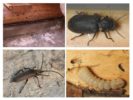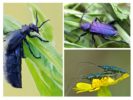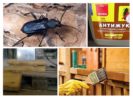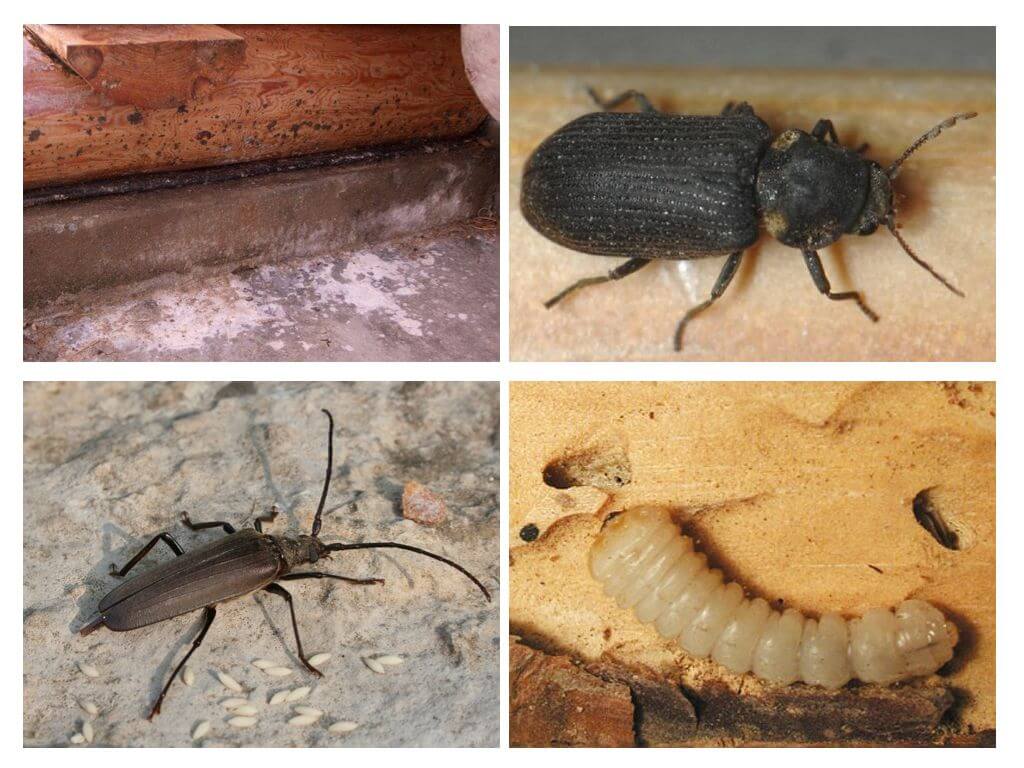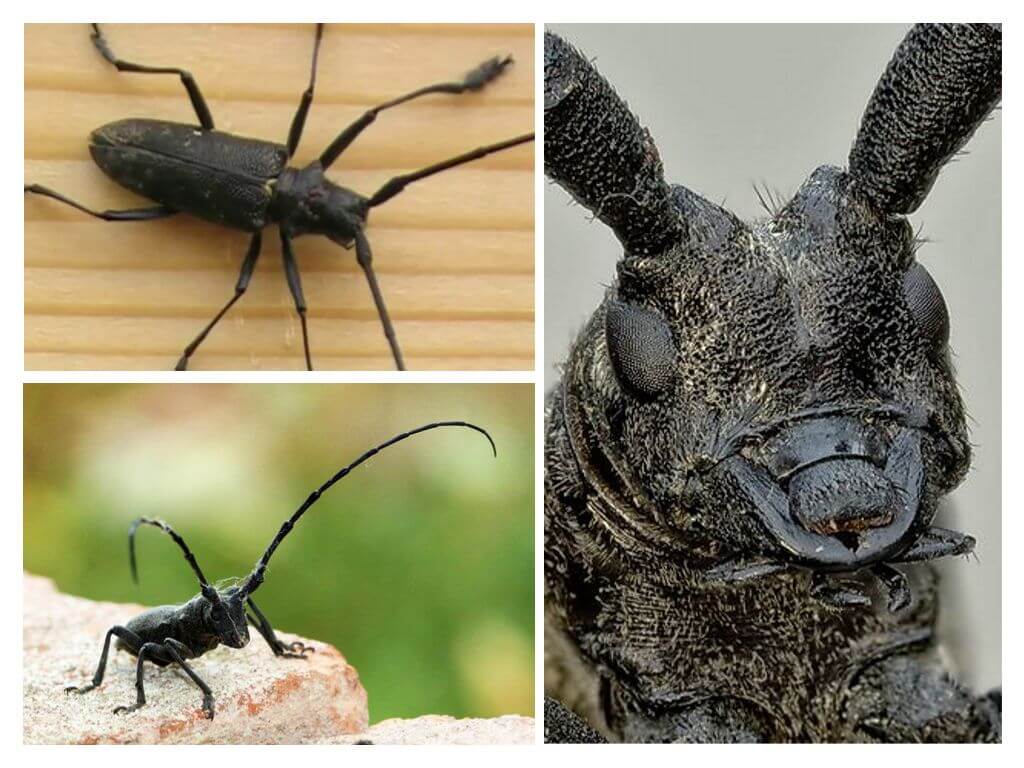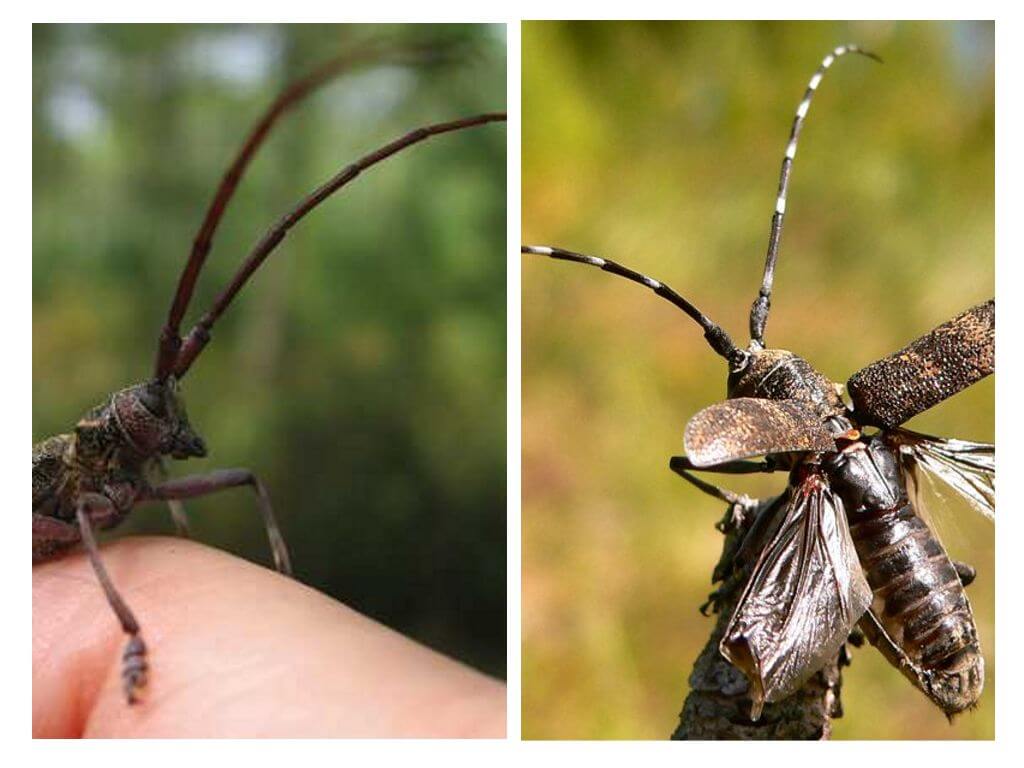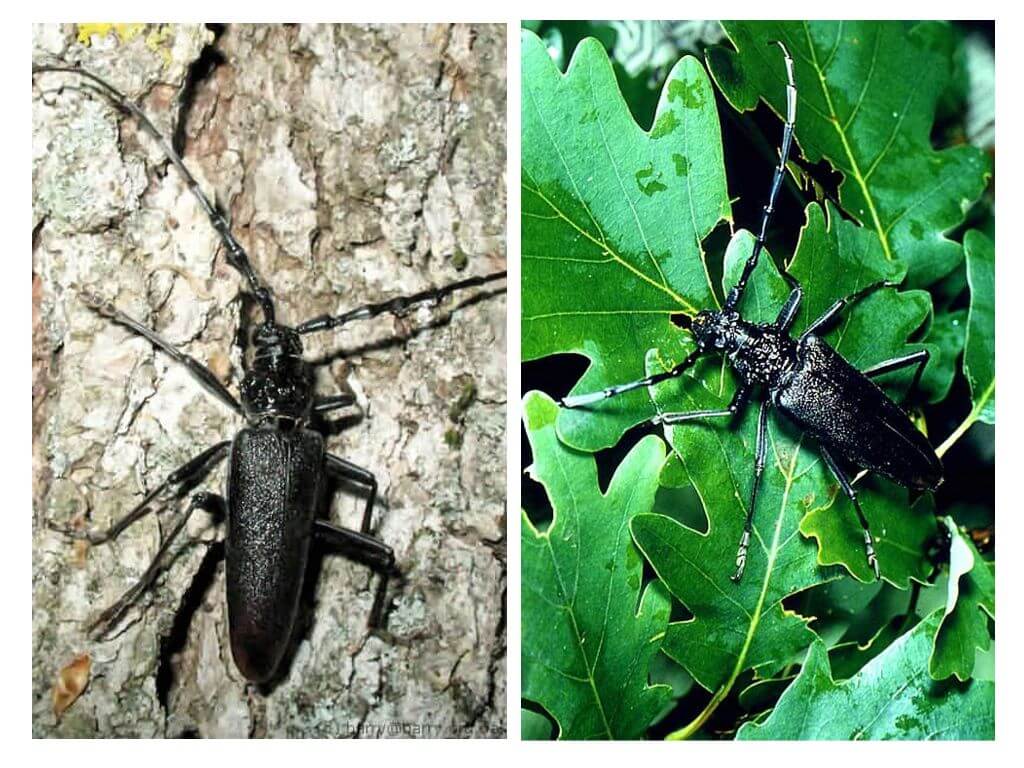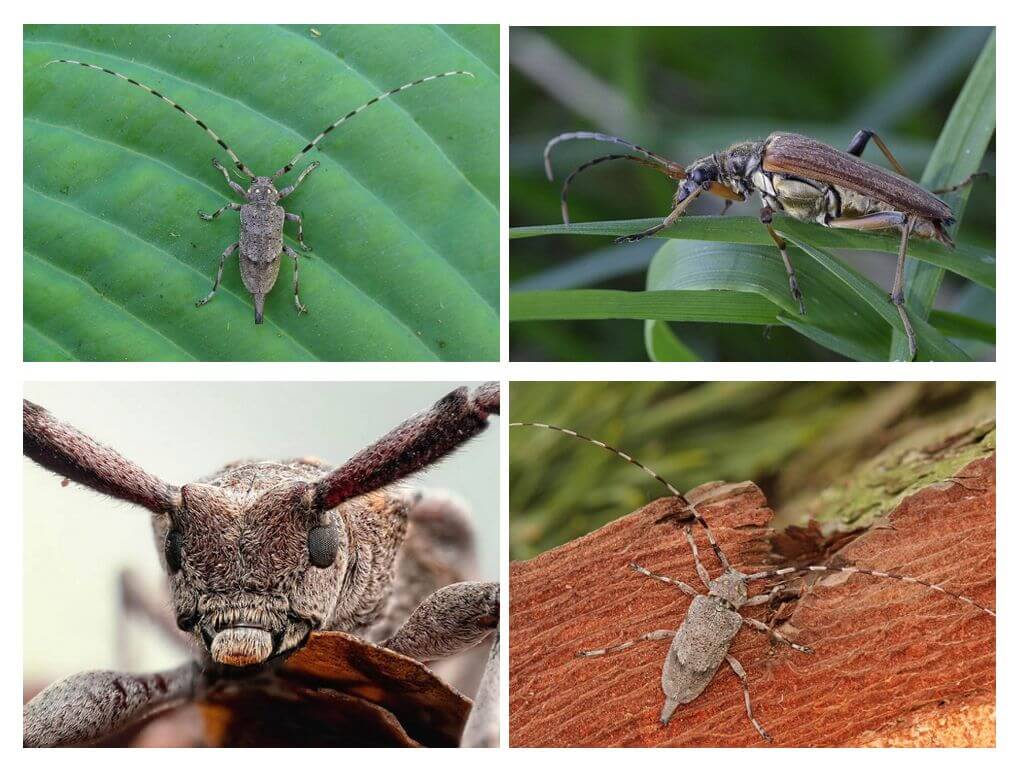- Black house barbel
- Purple barbel
- Beetle fighting
Despite the fact that wood is not too satisfying material, there are hunters who want to feast on it. This is about barbel bugs or as they are also called lumberjacks, which cause great damage to wooden buildings. There are a great number of species and subspecies of these pests - this is a purple barbel, and a furniture grinder, and a black house barbel. False beetles and drills also exist. All of them damage wood, the consequence of which is the weakening of the structure of the house, and sometimes its destruction.
Features of barbel bugs
Not everyone knows how dangerous woodworm bugs are. The habitat of most of them are dying trees. But there are also insects that prefer to settle exclusively in dead wood. These include the purple beetle barbel and the black house barbel.
Black house barbel
Black house barbel is widespread in Europe, China, Siberia and the Caucasus. The beetle has a flat black colored elongated body, which can reach a length of up to 2.5 cm. Relatively short whiskers grow on a large head (they do not even reach the middle of the body). Gentle white hairs cover the heart-shaped shield. On the back of the house barbel are slightly convex elytra, gradually tapering to the apex. The insect has two pairs of well-developed legs and two shiny spots on the pronotum. A photo of a house barbel is presented below.
On a note!
The habitat of the black house barbel is the elements of houses made of coniferous trees (window and door frames, floors, various beams, roof rafters, pillars and floors). The female, penetrating the wood cracks, lays in it from 50 to 400 eggs, of which, after 14-20 days, larvae with a great appetite appear.
The body length of an adult black woodworm larva can reach up to 2 cm. Its distinctive features are strong jaws and 3 vertically arranged eyes. The light shiny body is covered with barely noticeable cilia.
The larvae of the black lumberjack gnaw through the winding passages, moving deeper into the fibers and destroying the structure of the wood of the house. As a result, the surface layer of wood products becomes very thin. This is evidenced by the appearance of brown wood flour and excrement of pests. Young beetles are already coming out, which leave holes with a diameter of 6-12 mm.
Purple barbel
The flat purple barbel is another representative of the winged wing detachment. The length of its body does not exceed 1.5 cm. More often the beetle has a purple or dark blue color, less often a green surface. Standing hairs cover the entire body of the insect. The purple pest has a flat chest shield and wide, wrinkled elytra. The antennae, which are much shorter than the body, as well as the legs of the insect, have a chestnut-brown color.
The purple barbel lives mainly in dead wood, dry, as well as in timber in warehouses. It feeds exclusively on pine, less often spruce, and sometimes populates larch and fir. The beetle starts where the bark is at least partially preserved. On its surface, he gnaws twisting passages. This representative can also be found near private houses, damaging wooden buildings, hedges and poles.Distributed in Russia, countries of Western Europe, Siberia and the Caucasus.
Females lay eggs in the cracks of the tree bark from 1 to 5 pieces. After 2 weeks, broad and fairly flat larvae appear from them, the white body of which is covered with thick setae. In length, the larva grows up to 2.5 cm, its dimensions in width can reach up to 6 mm. Jaws that are well adapted to this help to gnaw wood.
Interesting!
Surprising is the fact that the barbel beetle uses only 20% of the total amount of wood damaged by it.
Signs of Pests
The following signs can testify that a barbel beetle is wound up in the house:
- the presence of small holes and passages on the surface of the wood;
- rustling, clicking and ticking - such characteristic sounds are made by barbel bugs, gnawing moves in the wood of the house;
- brown or yellowish powder (drill flour);
- the presence of pests flying around the house.
Therefore, when these symptoms are detected, it will not be amiss to know how to get rid of the barbel beetle in a wooden house.
Ways to fight
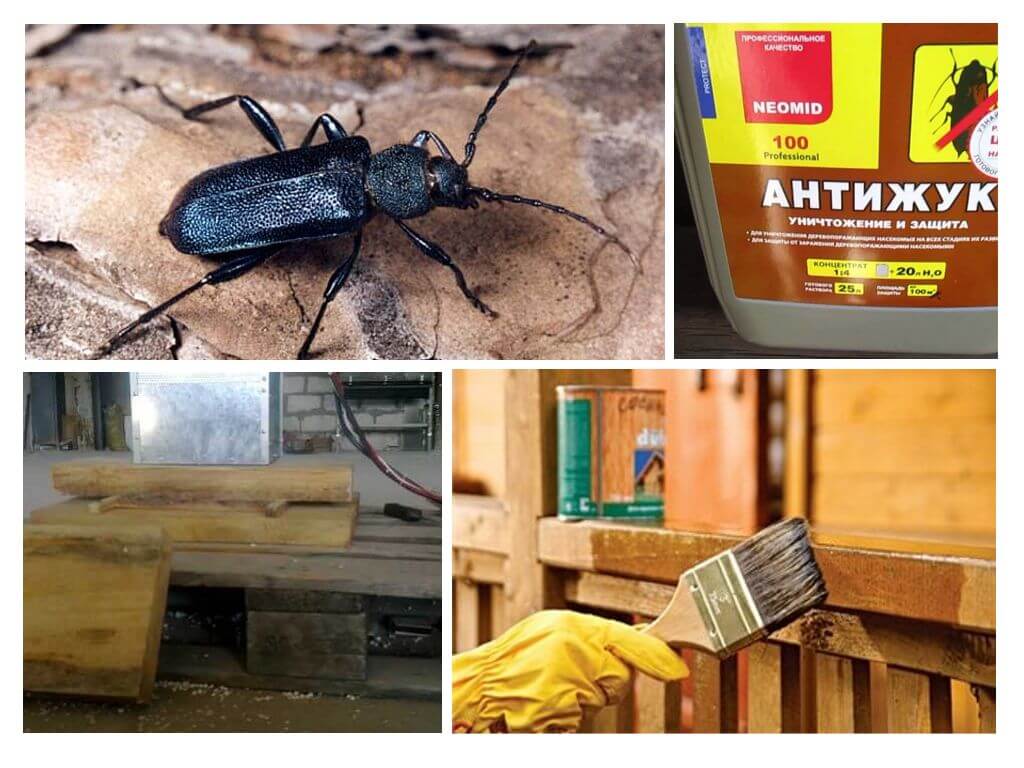
The main reason for the appearance of a harmful insect in the house is contaminated material that was used to build the house or commercial building. If such a fate befell your possessions, it is urgent to take measures to get rid of the pest. After all, only a timely struggle with the barbel beetle will help to save the house.
- Antifungal agent. They treat the surface of the house in dry weather.
- With a small number of single holes, in the absence of decay and destruction of wood, you can use the douching method. To do this, an insecticidal solution is injected into the detected passages with a syringe or a small oiler. For this purpose, you can also use liquid paraffin. After introducing the oil mass into the hole, it must be filled with paraffin or wax.
- With a large number of winding strokes, the douching method can be enhanced by impregnating the surface with the same insecticide. To get the maximum effect, you should capture some of the undamaged sections of wood. After that, all the "houses" of pests must be repaired with any thick putty.
- Removal of infected areas. With mass infection of wooden elements, they will have to be replaced with new ones.
- The method of temperature exposure. Freezing or warming up individual elements in a special chamber will help get rid of wood borers. The disadvantage of this method is the lack of the ability to conduct such a process on a more overall surface area.
- Fumigators are another means of dealing with woodworms in a home. So the smell of phosphine is not to the liking of larvae of barbel. In this connection, the use of this chemical product can be used only inside the house.
- Method of microwave disinsection. Microwave radiation generated by a microwave installation destroys baleen insects at various stages of their development. The use of this method does not require the evacuation of people and pets.
You won’t have to get rid of barbel bugs if timely preventive treatment of a wooden house is carried out. To do this, use protective agents - antiseptics of complex importance such as Pinotex, Phoenix or Senezh. Insects will not live in the wooden elements of the house if they are plastered.
In order not to have to deal with purple barbel, it is necessary to periodically clean dead wood, as well as properly store wood in accordance with sanitary rules.
